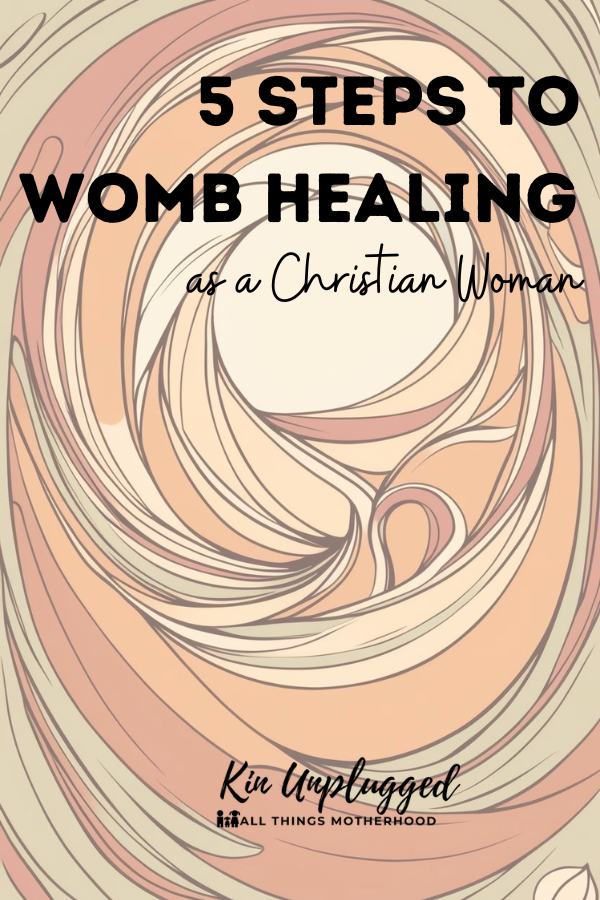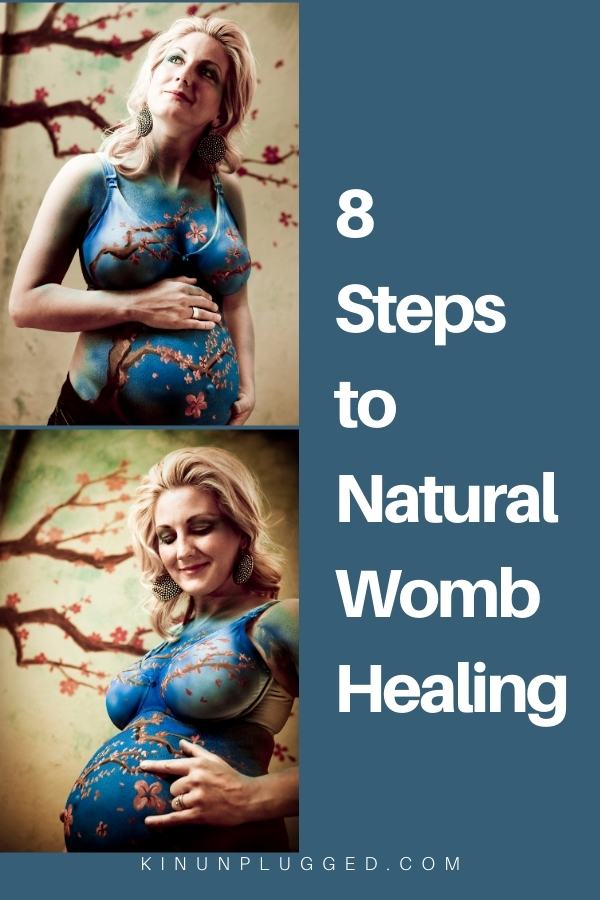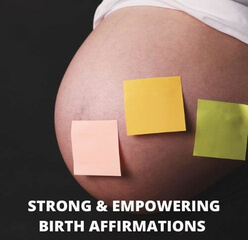If you have questions about womb healing, you might be postpartum or you’re thinking about starting a family. You might also have been trying to start a family for some time and healing your womb is a process you’ve realized you need to undertake in order to achieve your goal.
In this article, I’ll be talking you through the womb healing process and what it involves. Different from what you might have read from other sources or heard from a womb healer though, I’ll be speaking about it from the perspective of a Christian woman.
READ: Why Moms Should be celebrating menstruation
What happens during womb healing?
Womb healing is a restorative process that focuses on nurturing the physical, emotional and spiritual aspects of the womb and surrounding areas. As Christians, we can view this healing journey as an opportunity to invite God’s grace, peace and restorative power into a deeply personal part of our being. A womb healer may guide individuals through this process but ultimately, it’s about aligning the body and spirit with God’s design for wholeness.

The process of womb healing
- Physical restoration
Recovery from childbirth or trauma. The body undergoes significant changes during pregnancy, labor, or surgical procedures like C-sections. Womb healing involves physical care, like proper nutrition, hydration, pelvic floor exercises and rest, to support the body’s natural recovery.
Hormonal balance. Natural remedies such as consuming wholesome foods, avoiding processed sugars, and using herbal teas (if medically approved) can promote hormonal regulation. These physical steps are complemented by prayer, asking for God’s strength during recovery.
- Emotional healing
Many women carry emotional pain related to fertility struggles, miscarriages, or other womb-related experiences. A key part of womb healing is inviting God into these wounds, allowing His comfort to bring peace where there has been loss or grief.
Journaling prayers, reflecting on Scripture that emphasizes God’s healing promises and sharing your journey with trusted Christian friends or mentors can be deeply soothing.
- Spiritual healing and renewal
Prayer is central. Inviting the Holy Spirit to work within us, to cleanse us of any fear, guilt, or shame associated with the womb, can be transformative. Verses such as Psalm 147:3 (“He heals the brokenhearted and binds up their wounds”) can serve as a grounding reminder of God’s power to heal.
Energy practices rooted in faith. Instead of energy-focused concepts like chakras, focus on aligning yourself with God’s light and truth. Practices like meditating on the Word of God, deep breathing while reciting Scriptures, and laying hands on your belly while praying for restoration can create powerful moments of connection and healing.
- Community support
Surrounding yourself with a supportive Christian community can be a vital part of the healing process. Whether it’s through a women’s Bible study or seeking guidance from a trusted pastor, leaning on the body of Christ is invaluable.
- Celebrating new life
Womb healing can also be about preparing for what’s to come. Be it welcoming a child or embracing a new season of life. Dedicate time to gratitude and hope, thanking God for His plans, even when they aren’t fully clear yet.
Womb healing is not a one-size-fits-all process. It’s unique to every individual. A womb healer might help identify areas where specific focus is needed, but the ultimate healer is always God. He lovingly restores us, body and soul, through His grace and infinite power.
RELATED: Keeping a fertility journal: How to adapt your Meditation for Fertility
How long does it take to heal a womb?
Healing the womb is a deeply personal journey, and the time it takes can vary greatly depending on the nature of the healing required whether physical, emotional or spiritual. As Christians, we lean on God’s timing, guidance and restorative power, trusting that He will lead us through this process with grace.
Physical healing
The physical aspect of womb healing depends on the circumstances.
- After childbirth. For most women, the uterus takes about 6-8 weeks to shrink back to its pre-pregnancy size. However, full recovery from childbirth, especially if there were complications like tearing or a C-section, may take several months. During this time, it’s essential to rest, nourish your body with wholesome food, stay hydrated, and incorporate gentle exercises like pelvic floor strengthening.
- After surgery (e.g., fibroid removal or hysterectomy). Healing can take 6 weeks to several months, depending on the procedure. Listen to your doctor’s advice and give yourself grace to recover without rushing.
- Hormonal rebalancing. If there are hormonal imbalances caused by pregnancy, miscarriage, or other womb-related conditions, this can take several months. Pair healthy eating with prayer, asking for God’s wisdom and healing as you care for your body.
Emotional healing
Emotional wounds related to fertility struggles, miscarriages, or other challenges can take longer than physical recovery. While there’s no set timeline, intentional steps can help:
- Prayer and scripture. Bring your pain to God in prayer, and meditate on verses that remind you of His love and restorative promises, like Jeremiah 30:17 (“I will restore you to health and heal your wounds,” declares the Lord).
- Journaling. Writing out your thoughts and prayers can help you process grief and open your heart to God’s comfort.
- Community support. Lean on Christian friends or mentors who can pray with you and encourage you.
Healing emotionally is not linear but as you surrender your hurt to God and seek His peace, you’ll notice gradual improvements in your ability to move forward with hope.
Spiritual healing
As Christians, we believe in God’s power to restore us spiritually. Womb healing may involve breaking free from guilt, fear, or shame tied to your experiences. This can happen over days, weeks, or even years, depending on the depth of the wounds.
- Meditating on God’s promises. Focus on verses that speak to your identity in Christ, such as Psalm 139:13-14, which reminds us we are fearfully and wonderfully made.
- Laying hands and prayer. Spend quiet moments laying your hands on your belly while praying for God’s healing and presence to fill your body. Invite the Holy Spirit to renew your spirit and restore your joy.
- Healing through gratitude. Reflect on the blessings in your life and thank God for the strength He is giving you. Gratitude shifts our focus toward His faithfulness.
Practical tips for supporting healing
- Rest and self-care. Prioritize rest, and avoid rushing back into demanding routines.
- Get medical help. Work with a trusted doctor to monitor your physical recovery.
- Celebrate the little victories. Recognize progress – whether physical strength returning, emotional breakthroughs, or spiritual renewal—as signs of God’s work in your life.
Trusting God’s timing
Healing takes time, and it’s not always predictable. As you walk through this journey, trust that God is working in you, even when you can’t see it. Isaiah 40:31 reminds us, “But those who hope in the Lord will renew their strength.” Take each day as it comes, leaning on God’s grace, and know that complete restoration – body, mind, and spirit – is part of His beautiful plan for you.
How to naturally heal your womb
Healing your womb naturally is a beautiful way to honor the body God has given you while leaning on His guidance and strength through prayer and practical care. Let’s go through some holistic approaches rooted in good stewardship of your health and trust in God’s healing power.
1. Nutrition for womb healing
The body needs the right nutrients to heal and thrive.
- Iron-rich foods. Help rebuild your blood supply after childbirth, menstruation or surgery. Include spinach, lentils, red meat and beets.
- Anti-inflammatory foods. Reduce inflammation and support tissue repair. Incorporate foods like turmeric, ginger, berries and fatty fish (like salmon).
- Leafy greens and fiber. Assist in detoxifying the body and balancing hormones naturally. Examples are kale, broccoli and whole grains.
- Herbs and teas. Raspberry leaf tea is often called the “woman’s tea” for its uterine-strengthening properties. Other herbs like nettle and dandelion root also support healing and detoxification.
- Hydration. Staying hydrated is essential for circulation and recovery. Add lemon or cucumber slices to your water for a refreshing, cleansing boost.
2. Rest and recovery
Healing takes time and adequate rest is critical. After childbirth or surgery, you should
- Get plenty of sleep. Deep rest allows your body to regenerate tissues.
- Avoid heavy lifting or excessive activity, particularly in the early stages of recovery.
- Observe the biblical principle of a Sabbath – a day of rest to focus on God and renewal.
3. Hormonal balance through lifestyle
Our hormones are intricately tied to womb health. Here’s how to naturally support balance.
- Regular movement. Gentle exercises like walking or yoga (especially stretches for the pelvis) can promote circulation and reduce tension.
- Avoid toxins. Limit exposure to chemicals in cleaning products, cosmetics and non-organic foods, as they can disrupt hormones.
- Healthy fats. Include avocados, nuts, seeds and olive oil to help regulate hormones.
4. Strengthening the pelvic floor
A strong pelvic floor is essential for womb health, especially after childbirth. Gentle exercises like Kegels help support the uterus, bladder, and surrounding structures. Incorporate these into your routine a few times a day for lasting benefits.

5. Emotional Healing Through Prayer and Reflection
The womb is often a vessel of deep emotions, whether related to childbirth, miscarriage, or struggles with infertility. Emotional healing is as vital as physical care.
- Pray for peace and restoration. Meditate on healing Scriptures like Jeremiah 30:17 (“For I will restore health to you, and your wounds I will heal, declares the Lord.”)
- Journaling. Pour out your heart to God in a journal. Writing can be a therapeutic way to release emotions and gain clarity.
- Forgiveness. If you carry emotional pain related to your womb (grief, shame, or even guilt), lay these burdens before God. Forgiving yourself or others can be a powerful step toward healing.
6. Use heat therapy
Warmth can soothe and promote healing.
- Use a heating pad or hot water bottle on your lower abdomen to ease cramps or discomfort.
- Soak in warm baths with Epsom salts for relaxation and improved circulation.
7. Christian energy practices for healing
The idea of “energy” in a Christian context revolves around acknowledging God’s presence in our lives and how the Holy Spirit works to bring peace and restoration.
- Lay hands on your belly while praying. This is a powerful way to focus your prayers for healing. Ask God to bring restoration and renewal to your womb.
- Worship and praise. Music can be incredibly healing. Spending time in worship invites the Holy Spirit to move in your life.
- Community prayer. Invite trusted friends or family members to pray over you. Matthew 18:20 reminds us that “where two or three gather in my name, there am I with them.”
8. Trust God’s timing and grace
Ultimately, healing your womb naturally requires patience. While you take these steps to nurture your body, trust in God’s perfect timing and grace. Sometimes healing takes longer than we’d like but God’s plans are always for our good.
Proverbs 3:5-6 says: “Trust in the Lord with all your heart and lean not on your own understanding; in all your ways submit to him, and he will make your paths straight.” Lean on Him during this journey, and remember to treat yourself with kindness and grace along the way.
With faith and intentional care, your womb can find renewal and strength just as God designed it to do.
How do I know my uterus is healing?
Knowing that your uterus is healing requires paying close attention to your body, understanding the signs of recovery, and being in tune with your overall well-being. Here’s how you can recognize and support the process in a way that aligns with your faith and health goals.
1. Recognizing physical signs of healing
Your body often provides clear indicators that your uterus is recovering well.
- Reduced bleeding. If you’ve recently had a baby or undergone a procedure, initial heavy bleeding (lochia) should taper off over a few weeks, changing from red to pink, brown, and then a light yellowish discharge. Gradually decreasing bleeding is a positive sign.
- Diminishing pain or cramping. After childbirth or surgery, uterine contractions help shrink the uterus back to its normal size. These can feel like cramps, but as healing progresses, they should become less frequent and less intense.
- Returning to normal cycles. If you are not breastfeeding, your menstrual cycle may resume within a few months. A regular period often indicates hormonal balance and uterine health.
- No signs of infection. Watch for signs like fever, foul-smelling discharge, or severe pain, which could indicate an infection. The absence of these symptoms is a good sign of healing.
2. Emotional and hormonal balance
Your emotional and hormonal well-being is closely tied to uterine health. As you heal, you may notice
- Improved energy levels. Feeling less fatigued and more energized is a sign your body is repairing itself.
- Stabilized emotions. It’s natural to feel emotionally raw after major events like childbirth but as healing progresses, your moods should stabilize. Leaning on God through prayer and meditation can help bring peace during this transition.
3. Monitoring physical changes
Healing doesn’t happen overnight and patience is key. You can keep track of your progress by
- Checking abdominal tenderness. Over time, your lower abdomen should feel less tender, and the uterus will shrink back to its pre-pregnancy size.
- Tracking digestive comfort. The uterus sits near the digestive organs, so improvements in bloating or digestive discomfort may reflect internal healing.

4. Listening to your body
It’s important to stay attuned to how your body feels.
- Fatigue vs. renewal. Healing takes energy, so some fatigue is normal. However, if you’re gradually feeling more refreshed after rest, it’s a sign your body is recovering well.
- Physical strength. As your body heals, you may notice improved strength and endurance during daily activities or light exercise.
5. Supporting the healing process
In addition to recognizing signs of healing, there are ways to take care of your body as it restores itself.
- Prayer and spiritual connection. Turn to Scripture for encouragement. Verses like “He heals the brokenhearted and binds up their wounds” (Psalm 147:3) remind us that God’s healing power works in every aspect of our lives, including physical recovery.
- Healthy nutrition. Eating iron-rich foods, lean proteins, and plenty of fruits and vegetables supports uterine repair and replenishes your body after blood loss.
- Gentle movement. Walking or light stretching helps improve circulation, which is essential for healing.
- Heat therapy. A warm compress on your abdomen can relieve mild discomfort and encourage healing.
- Rest and trust in God. Healing is a journey that requires rest. Trust in God’s timing and allow yourself grace as you recover.
6. Regular check-ups
Scheduling follow-up appointments with your doctor or midwife is crucial. They can
- assess the uterus’s size and condition
- make sure there are no lingering complications like infections or retained tissue.
What can you expect after womb healing?

After womb healing, you can expect a profound sense of alignment with your God-given identity and purpose. Physically, you may notice a newfound ease in how your body functions, whether it’s smoother postpartum recovery, more comfortable menstrual cycles or simply feeling more at peace within yourself. Spiritually, many Christian women find that this healing deepens their understanding of being fearfully and wonderfully made (Psalm 139:14).
This process often leads to a greater trust in God’s ability to restore not just the body but also the heart and mind.
Emotionally, womb healing can open the door to forgiveness. Whether forgiving yourself for past regrets, releasing pain tied to loss or letting go of fears about the future. You may feel more equipped to focus on the joys and blessings God places in your life, living with renewed clarity and hope.
This healing is a reminder of His promise to “bind up the brokenhearted” (Isaiah 61:1) and bring wholeness where there was once pain.
So where are you with your womb healing process? What process are you/will you be taking?





